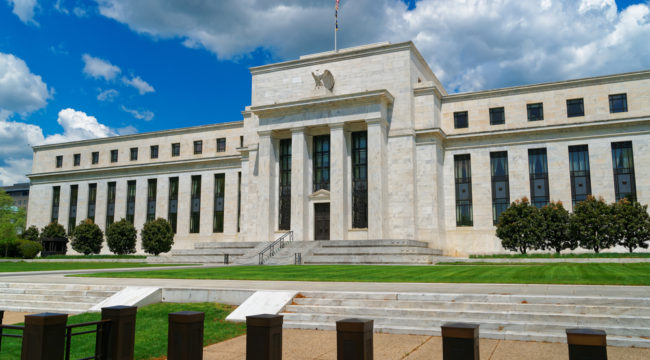The Fed's Built a Financial "Maginot Line"
Dear Reader,
Over the coming months, I believe we could see an economic meltdown at least six times the size of the 2007 subprime mortgage meltdown. That’s right: I believe we could see an economic meltdown at least six times the size of the 2007 subprime mortgage meltdown
Circumstances lead me to believe it could play out like the meltdown I experienced in 1998 after Long Term Capital Management (LTCM) failed.
This time, however, there will be several crucial differences that will leave investors and regulators unprepared.
In the national defense community, military commanders are known for fighting the last war. They study their prior failures in preparation for the next conflict. The problem is that each war inevitably involves new tactics for which they’re completely unprepared.
The most famous case was the backward-looking Maginot Line in the 1930s.
In response to Germany’s rapid advances in WWI, France built a line of concrete and steel fortifications and obstacles on their border to buy time to mobilize if Germany tried to invade again.
Hitler made the Maginot Line irrelevant by outflanking it and invading France through neutral Belgium. The French were unprepared. A few weeks later, German forces occupied Paris.
The same mistake is made in financial circles. Financial regulators are no different than military commanders. They fight the last war. The last two global meltdowns, in 1998 and 2008, are cases in point.
In 1998, a financial panic almost destroyed global capital markets. It started in Thailand in June 1997 and then spread to Indonesia and Korea. By the summer of 1998, Russia had defaulted on its debt and its currency collapsed. The resulting liquidity crisis caused massive losses at hedge fund Long Term Capital Management.
I know about the losses because I was there.
As LTCM’s lead counsel, I was at every executive committee meeting during the height of the crisis that August and September. We were losing hundreds of millions of dollars per day. Total losses over the two-month span were almost $4 billion.
But that wasn’t the most dangerous part.
Our losses were trivial compared with to the $1 trillion of derivatives trades we had on our books with the biggest Wall Street banks. If LTCM failed, those trillion dollars of trades would not have paid off and the Wall Street banks would have fallen like dominoes.
Global markets would have completely collapsed.
I negotiated a bailout with the leaders of the 14 biggest banks including Goldman Sachs, JPMorgan and Citibank. Eventually, we got $4 billion of new capital from Wall Street, the Federal Reserve cut interest rates and the situation stabilized.
But it was a close call, something no one ever wanted to repeat.
It was a valuable lesson for me, because soon after, regulators set out to make hedge fund lending safer.
Regulators believed this would prevent the next crisis. When the panic of 2008 hit, however, they were surprised that problems were not in hedge funds but in something new — subprime mortgages. The mortgage market collapse quickly spun out of control and once again brought global capital markets to the brink of collapse.
After the 2008 debacle, regulators again set out to fight the last war.
They made mortgage lending much safer with a number of regulations. But once again, regulators today are fixing the last problem and totally ignoring the next one.
The next financial collapse will not come from hedge funds or home mortgages but from somewhere they’re not looking. And I believe it’ll be here soon…
In my latest book, The Road to Ruin, I use 2018 as a target date primarily because the two prior systemic crises, 1998 and 2008, were 10 years apart. I extended the timeline 10 years into the future from the 2008 crisis to maintain the 10-year tempo, and this is how I arrived at 2018.
Only this time the Fed will have much less ability to respond to this crisis the way it has before. It’s mostly out of “dry powder.”
I spoke to a member of the Board of Governors of the Federal Reserve a couple of years ago and said, “I think the Fed is insolvent.”
This governor first resisted and said, “No, we’re not.”
But I pressed her a little bit harder and she said, “Well, maybe.” And then I just looked at her and she said, “Well, we are, but it doesn’t matter.”
In other words, here’s a governor of the Federal Reserve admitting to me, privately, that the Federal Reserve is insolvent, but that it doesn’t matter.
It doesn’t matter? Really?
When the next crisis hits, the Fed will soon realize that it does matter. A lot.
Below, I show you three “snowflakes” that could trigger the next financial avalanche. Each one is a realistic possibility. Read on.
Regards,



Comments: